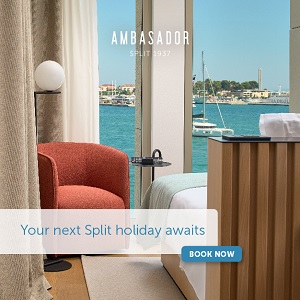Hate Speech in Croatian Media Growing Stronger
ZAGREB, October 10, 2020 - A comprehensive survey of Croatian media, which in some aspects spans over a period of more than six years and covers more than 14 million published items, reveals the presence of hate speech in them that is growing on a daily basis.
Marko Poljak, Jelena Hadzic and Masa Martinic of Newton Technologies Adria, which specialises in technologies that identify hate speech in Croatian, Slovenian and Serbian, and Presscut, a media monitoring company, conducted this comprehensive analysis of the media content in terms of the presence of hate speech and the events that encouraged it, and they published it in the latest issue of the In Media Res magazine.
The survey focused on two types of content, the first being media items in the period from early 2013 to the end of April 2019. More than 14 million individual items were found, in print media, radio and television news programmes and on news portals, and they included 50,724 items containing hate speech.
The second type of content were comments on social networks. A total of 72,000 comments, posted in the period from early April to early July 2019, were analysed and among them were 1,012 comments with unacceptable speech, which accounts for 1.4% of the comments.
Facebook post of HDZ MP's son encouraged most hate comments
The most media items containing hate speech were published on web portals, 0.58%, and the least on radio, 0.04%, and their total number grew by the year. The number of items containing hate speech, registered in only four months of 2019, exceeded the total number of such items in 2013, the first year of the survey.
The largest increase as well as the largest number of hate comments was recorded in 2016, and the increase in the number of such comments on web portals exceeded 300%, shows the survey.
In a period of one year, starting on 1 May 2018, only one day, Christmas, was without hate speech. The average daily number of posts containing hate speech was 29.6, and the largest number, as many as 287 items with unacceptable content, was recorded on 9 January 2019.
Media posts containing hate speech are often connected with certain events. The authors of the survey note that most posts, as many as 523, were connected with an insulting message Ivan Djakic, the son of HDZ MP Josip Djakic, posted on his Facebook wall on the occasion of Serb Orthodox Christmas, January 9.
A week later, Vukovar mayor Ivan Penava's statement drew 235 posts containing hate speech and he was criticised for causing a "spiral of hate speech".
Penava said at the time that Vukovar is "the epicentre of a continued, creeping Great Serbian aggression" and showed at a news conference a video of a group of local Serb students sitting while the national anthem was played at a football match.
Facebook posts most numerous, YouTube posts account for largest share
The largest number of comments were collected on Facebook, 58,847, and 801 or 1.34% contained unacceptable language. YouTube comments accounted for the largest share of unacceptable comments in the total number of comments, of 3.33%.
Most unaccaptable comments were provoked by posts related to Serbs, 12,837. The least comments with unacceptable speech were prompted by posts that referred to Roma, 1,448.
The largest number of individual unacceptable comments referred to Bosnians, 175, and the largest share of negative comments in the total number of comments collected referred to Muslims and Jews, 2.25 and 2.22% respectively.
Negative comments about migrants accounted for the smallest share in the total number of comments, 0.54%, while the average share of negative comments for all groups was 1.41%.
The largest number of negative comments refer to ethnicity, 587, and religion, 337.
The question of why certain groups attract a smaller or bigger number of unacceptable comments was not the subject of this survey. The answer to that question requires a deeper analysis of the items published, the related events and context, and possibly persons who posted comments, the authors of the survey conclude.
For the latest travel info, bookmark our main travel info article, which is updated daily.
Read the Croatian Travel Update in your language - now available in 24 languages.
Croatia's Coronavirus Update: 486 New Cases and Four Fatalities
ZAGREB, October 10, 2020 - A total of 486 coronavirus infections and four fatalities have been registered in the past 24 hours, the national COVID-19 response team said on Saturday.
The number of active cases now stands at 2,662, including 382 people who are hospitalised and of whom 29 are on ventilators.
Since February 25, when the first case of the infection was reported in the country, 19,932 people have been diagnosed with COVID-19, of whom 317 have died while 16,953 have recovered, including 258 in the last 24 hours.
Currently 12,424 people are self-isolating.
To date, 353,526 people have been tested for the virus, including 4,576 in the last 24 hours.
Archaeological Discovery in Split: Ancient Roman Market Found in Manuš Area
October 10, 2020 - What was found long ago in the Split neighborhood of Manuš is not an odeon, nor an amphitheater, but a late antique macellum. That is, an ancient Roman indoor market!
Sloboodna Dalmacija writes that this is a site that has surprised with its invaluable discoveries for the history of Split for over a hundred years. Katja Marasović from the Department of Architectural Heritage at the Faculty of Civil Engineering, Architecture and Geodesy in Split, archaeologist Anita Penović from "Temenos" and archaeologist Nebojša Cingeli from "Neira" are digging in to find out more.
As early as 1897, the historian and archaeologist Luka Jelić concluded that the ancient settlement of Spalatum existed in the area of Split before the construction of Diocletian's Palace. He believed that its center was in the old suburb of Manuš, along the road that led from Solin to the bay of Split. This position on the Tabula Peutigeriana is marked Spalato. Jelic based his conclusion on the findings of architecture and graves from the second or beginning of the third century, found during the excavation of the railway near the Bulat and Tara mansions and the Girometta vineyards.
Subsequent research has shown that in Manuš and Dobri, on both sides of Solinska cesta (today Ulica Domovinskog rata and the northern part of Livanjska), there are remains of architecture and graves that can be dated to the 1st and 4th century. In the latest research in Manuš, inside traditional houses, the foundations and lower parts of the walls of late antique buildings were found, which gave new data on the distribution and urban scheme of Spalatum.
In 1954, south of the Austrian reservoir on Domovinskog rata Street, archaeologists led by Duje Rendić-Miočević found a part of an early Christian three-nave basilica with a characteristic trapezoidal ground plan with a semicircular apse on the east side and preserved floor mosaics in places. A few years later, experts from the Urban Institute found the southwest corner of the basilica and part of the east wall and apse of another early Christian basilica. Based on historical sources, Tomislav Marasović concluded that it was a site "ad basilicas pictas - on painted basilicas," where a provincial church synod was held in 1185, and he dated the basilicas themselves to the fifth and sixth centuries.
Twenty years ago, archaeologists from the Institute for the Protection of Monuments found an early Christian baptistery with a cross-shaped baptismal font lined with precious alabaster slabs at the same site. However, the remains of an earlier building with three concentric walls within orthogonal walls were also found. Researchers interpreted the findings as remnants of an ancient odeon (theater), and according to movable findings, they dated it to the first or second century. Through the efforts of the head of the Conservation Department, dr. Radoslav Bužančić, new archeological excavations were carried out seven years ago west of that locality, below Domovinskog rata Street. It was then determined that the circular walls continued further east, so Bužančić assumed that it was not a theater but an amphitheater. However, the latest evidence from the three researchers says otherwise.
"The described archeological discovery shows that there was a large central building in Spalatum, of which only the foundations and in some places the lowest parts of the walls have been preserved to this day. The remains found lead to the conclusion that it is a square floor plan with a round courtyard surrounded by a porch in the middle. Around the porch were trapezoidal rooms, bordered by two circular walls and radial walls. The main axis of the building, in the north-south direction, coincides with the axis of the historic road that led from Salona to the northern gate of the Palace," said Dr. Marasović, Penović, and Cingeli, explaining that the small thickness of the walls (55 to 70 cm) and the construction technique show that for reasons of stability they could not be higher than five to six meters, which means that the building was a ground floor or a single story.
The ground plan of the large late antique building has a circular courtyard thirty meters in diameter, surrounded by a porch oriented to 24 rooms of about 25 square meters. With a square floor plan, where another 28 rooms of 30 to 70 square meters can be assumed, with one entrance in the middle of each façade, it is suggested that it is a macellum - an ancient Roman indoor market! This assumption was also confirmed by the architect Jean-Louis Paillet, a French expert in ancient architecture.
This is supported by movable findings such as a measuring cup for grain and money from the fourth to the sixth century. Findings of lavish marble cladding, which do not lag behind those in Diocletian's Palace in terms of quality, show that the building was lavishly decorated. And some metal elements, such as bronze ornaments in the shape of leaves, confirm such a conclusion. It can be assumed that the Split macellum, like the others in the Roman Empire, was equipped with public toilets, the architects concluded, contributing to a new historical sensation of this archaeological site.
"The foundations of the macellum are intersected by the aqueduct canal of Diocletian's Palace from the northeast to the southwest. At the junction of their walls, it is clearly seen that the foundation of the macellum leaned against the already existing wall of the aqueduct canal, which is clear evidence that it was formed after the aqueduct. It is reliably known that the emperor Diocletian settled in the Palace in 305, after his abdication in Nicomedia, and lived there until he died in 316. Except for some movable findings from the first and second centuries, which prove the earlier phase of the site's life, most pottery findings date from the fourth to the sixth century, and money from Maximian (286-310) to Justinian (527-565). The most common coin found at the site is that of Constantine the Great (307-337). For now, the building cannot be dated more precisely. Still, it is difficult to imagine that the initiator of the construction of such a large building in Spalatum was anyone other than the emperor Diocletian," says Dr. Marasovic.
Diocletian spent the last ten years of his life in his palace. It can be assumed that he had a monumental building built, square in plan, measuring 67 by 67 meters, located north of the Palace, with four entrances, a circular courtyard of 30 meters in the middle, and with more than fifty rooms facing the courtyard or outside.
Based on the floor plan and the movable archaeological material, it can be assumed that it is a Roman food market. The outer walls appear to have been built of stone and decorated with half-pillars or pillars. A porch with about 28 pillars surrounded the courtyard. The interior was lined with marble paneling.
Looking at this building in a broader context, some questions arise related to its location and purpose, to which we have no answers yet. What is the reason for building a market in the small Roman settlement of Spalatum, which is next to the Roman markets of Ephesus, Durres, and Pozzuoli and is one of the largest in the Empire? Was it selling anything other, more valuable, or more durable than groceries that could attract buyers from the wider region? Its position in the axis of the main communication of Salona - Diocletian's Palace differs from the usual accommodation of macellums, which are usually along the main streets, but never on them.
Such accommodation was obviously chosen to emphasize the monumentality of the building, and therefore the road traffic had to be redirected around the macellum. We hope that future archaeological research will provide answers to the questions asked and that the results of our research will be useful when planning future research, concluded Marasović, Penović, and Cingeli, who will publish their research in the "Journal of Dalmatian Archeology and History."
You can see photos at Sloboodna Dalmacija
For the latest travel info, bookmark our main travel info article, which is updated daily.
Read the Croatian Travel Update in your language - now available in 24 languages.
Join the Total Croatia Travel INFO Viber community.
Prestigious Recognition: ACI Marina Cres Won 'Golden Anchor' for Beauty, Infrastructure, and Hospitality
October 10, 2020 – The Nautical Patrol of Jutarnji list awarded the “Zlatno sidro“ ("Golden Anchor") awards to Croatian marinas, according to the surveyed boaters. This year, ACI Marina Cres was voted as the best.
As Jutarnji list reports, their Nautical patrol sailed around the most important Croatian marinas on the Adriatic for the fourth year in a row. This floating editorial office, as they are also called, witnessed how top-notch nautical tourism persisted, if not increased, due to the coronavirus pandemic.
Once this was affirmed, it was time to reward the best marinas based on many survey questionnaires in which boaters expressed their impressions of the marinas in which the Patrol would find them. They passed 32 marinas and 22 anchorages and small coves.
Exceptional marinas
This year, at a ceremony in Skradin, the prestigious Nautical Patrol Award of Jutarnji list "Zlatno sidro" ("Golden anchor") was given to ACI Marina Cres, which won the most votes of satisfied sailors who said that this marina excels in its beauty, infrastructure, and hospitality.
The recognition for the development of elite nautical tourism in Croatia went to the ACI Marina Dubrovnik, which delighted its guests with its sports content.
The oldest Croatian marina, the one in Punat on the island of Krk, received a prestigious award for its exceptional contribution to the development of Croatian nautical tourism. Namely, this marina is a favorite for guests because of its exceptional investment in high technology, such as surveillance applications with which every sailor can instantly check the condition of their boat via their mobile phone.
Marina Vrsar won second place as a beautiful, safe, and friendly marina, and third place went to Marina Tribunj, thanks to its peace, quiet, and discretion.
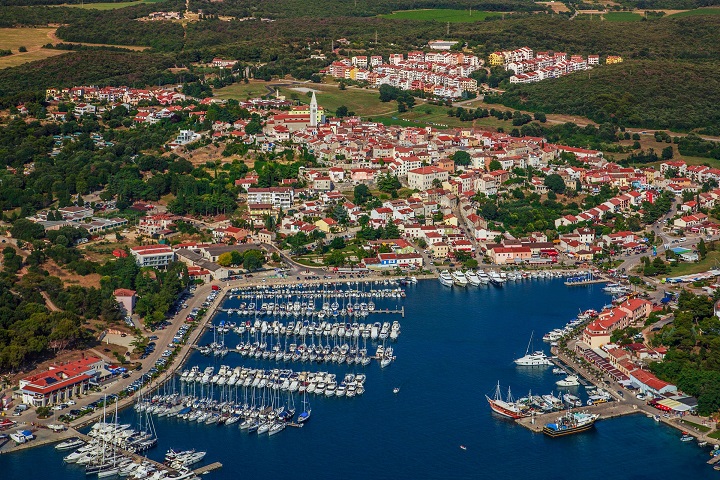
Vrsar / Copyright Romulić and Stojčić
Special recognitions
A special recognition “Dragulj Jadrana“ ("Jewel of the Adriatic") was given to the great Mediterranean park of Marina Sutomišćica on the island of Ugljan. Also, ACI Marina Opatija received a special award called “Zlatni osmijeh Jadrana“ ("Golden Smile of the Adriatic") for the kindness of their staff and their willingness to help.
Although the Nautical Patrol did not find any cases of coronavirus infection in any marina, they still introduced a special recognition for the safest corona-free marina, ACI Marina Šimuni. It is located in a quiet bay in Pag with excellent nautical comfort and it consistently implemented corona protection measures.
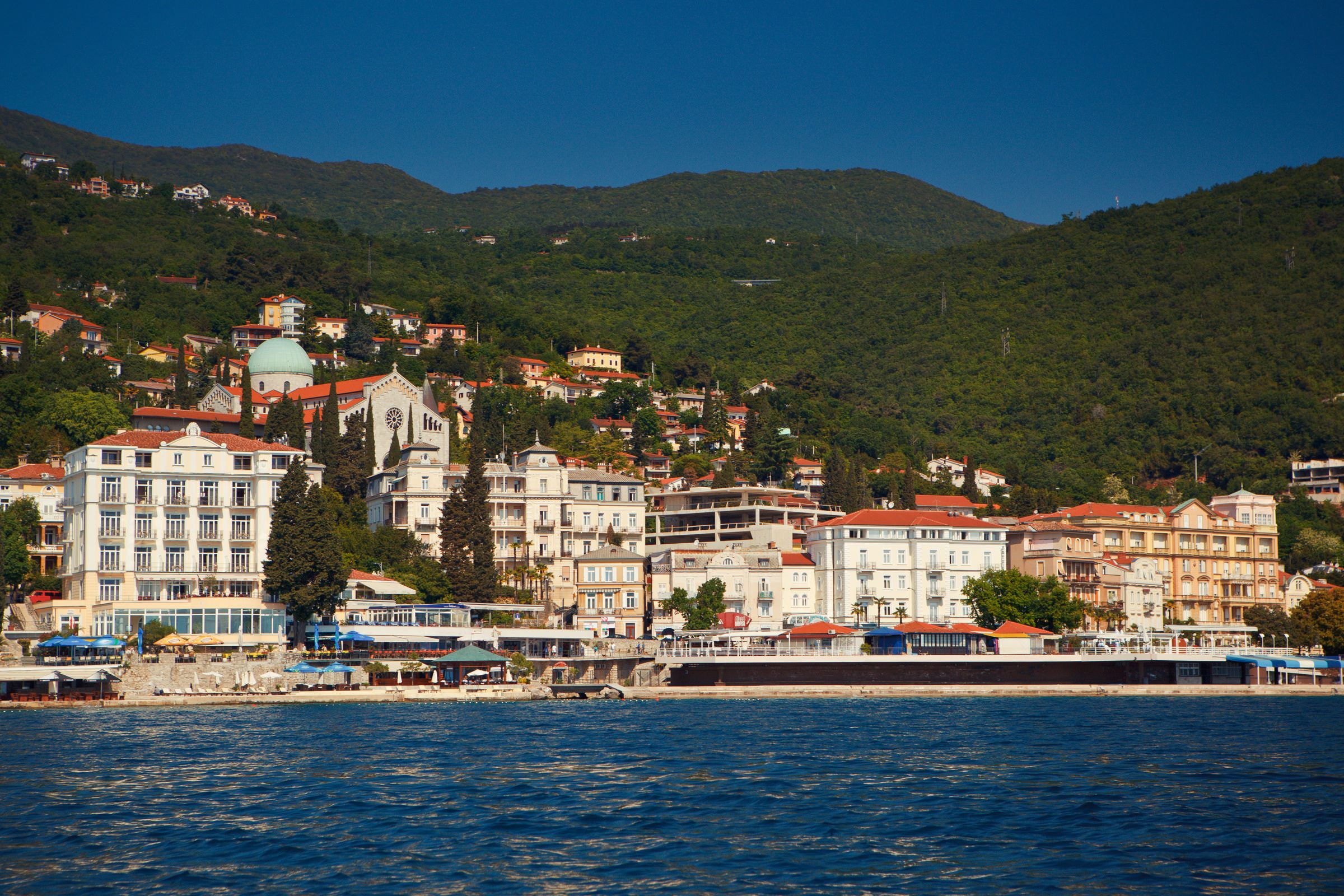
Opatija, a pioneer of Croatian tourism / ACI Marina Opatija received a special award for the kindness of their staff / Copyright Romulić and Stojčić
"Green and blue Croatia"
This year, the Nautical Patrol of Jutarnji list, in addition to nautical marinas, also visited nearby family farms (OPGs), thus connecting "blue" and "green" Croatia.
Numerous family farms at the time of the corona adapted their business, such as family farms that deliver fresh fruits, vegetables, honey, and other products (even roasted meat) directly to the ship. That is why this year, for the first time, Đorđe Studić from Vodice, whose family farm of the same name received the most comments from readers of the Jutarnji.hr portal, was given the special "Biser zelene magistrale" ("Pearl of the Green Highway") award.
'Adriatic was safe throughout the summer'
"In this challenging period, we managed to find our way to the readers, we started the action in April, we showed the sustainability of this branch of tourism with arguments. This was recognized by our partners, so we received broad support from nautical tourism stakeholders, there were, for example, more than last year," said the editor-in-chief of Jutarnji list Goran Ogurlić, adding that the Nautical Patrol consisted of 16 crew members, who worked the whole summer in four shifts.
ACI Marina Vrsar won second place as a beautiful, safe, and friendly marina / Copyright Romulić and Stojčić
"The marinas are well organized, all the recommendations of the National Civil Protection Headquarters have been respected. So we can clearly and with experience say that we are living health proof that the Adriatic has been safe throughout the summer, with responsible behavior," concluded the editor-in-chief.
The leader of the Patrol and the author of this successful project, Mladen Gerovac, says that the fourth edition of the Patrol was difficult to organize due to special conditions, but they still succeeded.
"Our floating editorial office proved that even during the pandemic, there is nautical tourism and that our floating guests trust us," said Gerovac.
For the latest travel info, bookmark our main travel info article, which is updated daily.
Read the Croatian Travel Update in your language - now available in 24 languages.
Tourism in the Corona Age: 10 Virtual Ways to Discover Brac
October 10, 2020 - Continuing TCN's look at the video tools available to explore Croatia's tourism destinations, it is time to Discover Brac.
Way back on March 14 - several lifetimes ago - I published an article called Tourism in the Corona Age: 10 Virtual Ways to Discover Zagreb. The way I saw things, now was an OUTSTANDING opportunity for tourism promotion. People have time, they yearn for their freedom and former lives, so give them the tools to thoroughly research and enjoy your destinations, and you will have then longing to be there. And when they do come, they will have a deeper understanding of the destination due to their research.
South Africa and Portugal were the first to do their post-corona tourism promotion videos several weeks ago (Post-Corona Tourism Planning: Lessons from South Africa and Portugal), a trick which has been followed by other tourism countries, the latest being Croatia with the national tourist board campaign, #CroatiaLongDistanceLove, going live yesterday.
But while these campaigns create longing and market presence, they don't really educate. People now have time to really get into destinations. And dreams of escape to somewhere more exotic are high on the list of priorities of many.
So TCN decided to help with that education with a new series called Virtual Croatia, where we will be helping you discover many of Croatia's destinations with all the best virtual tools available on your self-isolating sofa at home.
We started with Tourism in the Corona Age: 10 Virtual Tools to Discover Hvar.
After this, we put our a press release (which you can read here in English and Croatian) offering a free article to any local tourist board in Croatia who would like the free promotion in our Virtual Croatia series.
The Sinj Tourist Board was the first to respond, and now you can see just how rich the tourism offer is in this proud Alka town - your virtual tools to Discover Sinj. This was followed by Discover Opatija, Discover Brela, Discover Rogoznica, Discover Stari Grad, Discover Klis, Discover Trogir, Discover Omiš, Discover Lumbarda, Discover Jezera, Discover Šolta, Discover Cavtat and Konavle, Discover Koprivnica, Discover Pašman, Discover Gradac, Discover Virovitica, Discover Bibinje, Discover Crikvenica and Discover Rovinj.
We have had several more emails from local tourist boards, who we invited to participate in the series by sending in video material about their destination. As with everywhere else, corona dominated the agenda at TCN during the summer, and we now finally have time to continue with the series, with perhaps the most ambitious article yet. I am very grateful to all 8 local tourist boards and offices on the island of Brac for sending me material for this comprehensive overview of this incredible island. So pour yourself a coffee, or perhaps something stronger, and learn just how magical Croatia's tallest island really is.
Welcome to Brac - promo videos
Brac from the air - a spectacular overview!
Brac, island of Culture and Adventure.
Brac in 4k by Travel + Leisure.
Meet the main destinations...
Supetar.
Bol.
Milna.
Sutivan.
Pucisca.
Postira.
Nerezisce.
Selce.
Skrip.
Splitska.
Povlja.
Discover Brac in History
So how did Brac look in years gone by? Some things change, some stay the same. A selection of videos from yesteryear.
Bol promotional video 1960.
Brac in 1974.
1980's promo video.
1990's promo video.
Autumn as It Was Once - Brac in 1957.
Active Brac
Brac promotes itself as an island of culture and adventure, and there are certainly plenty of things to do on the island for those itching to get active after time on the beach.
Among the top activities is cycling, and the island has made great progress in recent years developing its cycling tourism offer. Here is it, being promoted along with Hvar by the Central Dalmatia Tourist Board.
A relaxing, safe, family-friendly cycling destination, where even British Prime Ministers are known to escape to.
There is plenty of action on the water as well, apart from swimming. Bol is one of the top windsurfing locations on the Adriatic.
The Central Dalmatian islands are havens for sailors, and Brac is included on most itineraries. Two harbours which are very popular are Milna...
... and Bobovisca.
There has been an explosion of interest in kayaking on the Adriatic in recent years, and Brac is no exception. A great way to explore all those hidden coves and bays up close.
And there is plenty to discover below the surface, with numerous scuba diving options.
Calling all kitesurfers.
Vanka Regule Festival (translated Out the Ordinary) based in the town of Sutivan, isn’t your everyday sports competition. It is more of an ad hoc gathering of like-minded individuals looking to have fun while enjoying extreme sports; mountain bike racing, free-climbing, and original mixes of various outdoor sports with the legendary tent-town (šator grad)as the centre of it all. Lonely Planet describes it as the X-games meet Woodstock. Need we to say more?
If you prefer views of the sea rather than being in it, Brac offers plenty of choice. Wherever you are, the views are just stunning. It is also a great island for hiking. If you have the energy of course, the peak of the island is the place to be. There is talk of a cable car from Bol to Vidova Gora in the future, but for now, the sense of achievement at hiking to the top of Croatia's talest island will be rewarded with views to match your efforts.
Brac Heritage
Take some time away from the beach, and you will discover some truly unique things on Brac, particularly with regard to its heritage. Top of the list is the outstanding Blaca Hermitage Monastery, whose construction and history is beautifully told in one of the best videos I have seen about Croatia, above. I particularly liked the story of the monks somehow transporting the grand piano which resides there, consuming an alleged 56 litres of wine along the way.
Equally impressive, and even more unusual, is Dragon Cave, hidden away high above the hamlet of Murvica, close to Bol, and only visited by about 1,000 people a year. It is quite the hike, but the views are more than worth it, and that is before you see the spectacular (and still not fully explained) stone carvings in the walls of the cave. Check it out in the video above, or here is an overview of my visit a few years ago.
In Bol, there is the 'house in a house'. The story says that the house was created in the 19th century when three brothers from Vuković family married three Spanish women and decided to build a big house (Paloc) on their land. However, there was already a house located there, built by a local peasant called Marko. The brothers offered Marko a handsome amount for the house, but Marko refused. Influential brothers then sought help from the local authorities but Marko had a huge fight and even threatened to kill the mayor. Fearing retribution, Marko fled to the Dubrovnik Republic and brothers began to build the walls around Marko’s house, planning to bring it down in the process. As they sailed to Venice to get the material for the building, they were caught in a storm and died in a shipwreck. Since they had no heirs, Marko came back to live in his old house, surrounded by the walls of the unfinished house that are still there today.
The olive oil museum in historic Skrip is a great addition to the island's heritage and traditions, located as it is in an original olive mill. And the oil is excellent!
And don't miss the spectacular Branislav Deskovic Gallery and its historic building in Bol.
Perhaps Brac's most unusual piece of heritage - the recreation of Supetar in... Texas! Crazy but true - learn why in this video report from Time Magazine.
Food
Brac has incredible food, and very healthy - just ask UNESCO!. Along with the island of Hvar and several other locations in Mediterranean countries, the Mediterranean Diet of the island of Brac was inscribed as intangible UNESCO heritage back in 2013.
Two VERY local delicacies to try (the first one not for vegetarians) are Vitalac, lamb offal on a skew, and the traditional cake, Hrapocusa.
Dalmatia is famous for its olive oil, and the golden liquid from Brac is highly prized. It is also the subject of a rather unusual competition each year - the Olive Picking World Championships, which are held in Postira. And with teams coming from as far away as New Zealand, competition is highly competitive!
Wine
Brac has a rich wine tradition, and today's winemakers are producing some outstanding wines which are being exported nationally and internationally. There are two of note which offer very different tasting experiences.
Stina in Bol, right in the heart of the waterfront.
And Senjkovic in Dracevica, a charming rustic experience, complete with local dialect poetry from Magdalena Senjkovic.
Beaches
Put the words 'Brac' and 'beach' together and what do you get? Zlatni Rat, of course. Easily the most famous beach in all Croatia, the 'Goldern Horn' lies a short walk from the centre of Bol, and it starred in the local tourist board campaign, SymBOL of the Adriatic.
But there are magnificent beaches all over the island, and you will not have to travel too far to find the perfect spot. To help you choose, here are 5 of the best.
Stone for the White House
One of the most famous claims about Brac is that its famous white stone was used in the construction of The White House in Washington, as well as several other notable buildings around the world, including Diocletian's Palace, Liverpool Cathedral and Budapest Parliament. The island has a very rich stone tradition, one which is very much alive today in Pucisca, where the stonemason school specialises in this ancient craft, and pupils from all over the world come here to study. Visitors are welcome, and it is well worth the effort. Incredible place.
Klapa
The hauntingly beautiful a cappella klapa singing is a highlight of any visit to any visit to Dalmatia, and many romantic memories are created to the sound of this UNESCO-protected type of traditional singing. Traditionally the preserve of male voices, there are a growing number of female klapa ensembles these days. Among the most beautiful promoting Brac is this one above from Klapa Neverin from Kastel Luksic, set against the stunning Brac backdrop of Skrip and Skrip dialect poetry.
Brac has several male klapa groups who sing with passion about their homeland and favourite island. Here is Klapa Braciera and 'Bolska'.
Official Tourist Board Websites, and 25 Things to Know about Brac
There are six local tourist boards and two tourist offices on Brac, where you can find out more:
To learn more about this fantastic island, check out TCN's Brac: 25 Things to Know about Croatia's Tallest Island.
To discover more of virtual Croatia, you can follow this series in our dedicated section, Virtual Croatia.
EPIC Webinar 5: Judith Welsh (Cleveland), Rahul Kashyap (Mayo) on Patient Experience & COVID-19
October 9, 2020 - The EPIC Webinars continue, with Cleveland Clinic's Judith Welsh and Mayo Clinic's Rahul Kashyap next up, talking about the Patient Experience before and after COVID-19.
The COVID-19 pandemic has changed the world and still does. Changes are happening in all fields. Situations change from moment to moment whether we are talking about health and patient care or something completely different. Uncertainty has become our reality and the pool in which we bathe every day. The inhabitants of the entire planet are adapting to the new living conditions that are being brought by epidemiologists’ day by day. Regardless of the current situation, a pandemic will change a patient’s experience in the years to come. In a time of reduced or, for some institutions even, banned personal visits, social distancing measures, wearing protective masks and without the current COVID-19 vaccine, doctors are using new digital tools to survive. The technology has enabled healthcare providers to continue connecting with patients through virtual advice. Patients have embraced the experience of virtual care, and global surveys now predict that virtual care interactions will exceed one billion in 2020. Digital patient engagement tools facilitate the growth of virtual medical examinations for non-coronavirus-related issues.
The Bagatin clinic, together with the international collaborating presenter Cleveland Clinic, will present this burning topic through the EPIC platform next week. On October 15th at 6pm CET you will have the opportunity to meet two fantastic speakers from two amazing world-famous clinics in USA. These are Judith Toski Welsh, MD, FACEP from the Cleveland Clinic and a doctor Rahul Kashyap, MBBS, MBA from Mayo Clinic.

Judith Toski Welsh is the Associate Chief Experience Officer at Cleveland Clinic. She focuses on improving clinician communication and strengthening teamwork among caregivers to improve patient experience, quality and safety. She is also a practicing emergency physician who has worked in community and academic departments.
Rahul Kashyap is a physician scientist in Critical Care Medicine, and holds academic rank of Assistant Professor of Anesthesiology at the Mayo Clinic. He has published over 230 articles in prestigious peer-reviewed journals. He has also written a book titled ‘Mayo Clinic Critical Care Case Review’. Dr. Kashyap is an award-winning public speaker who has received awards for exemplary research, quality improvement and leadership.
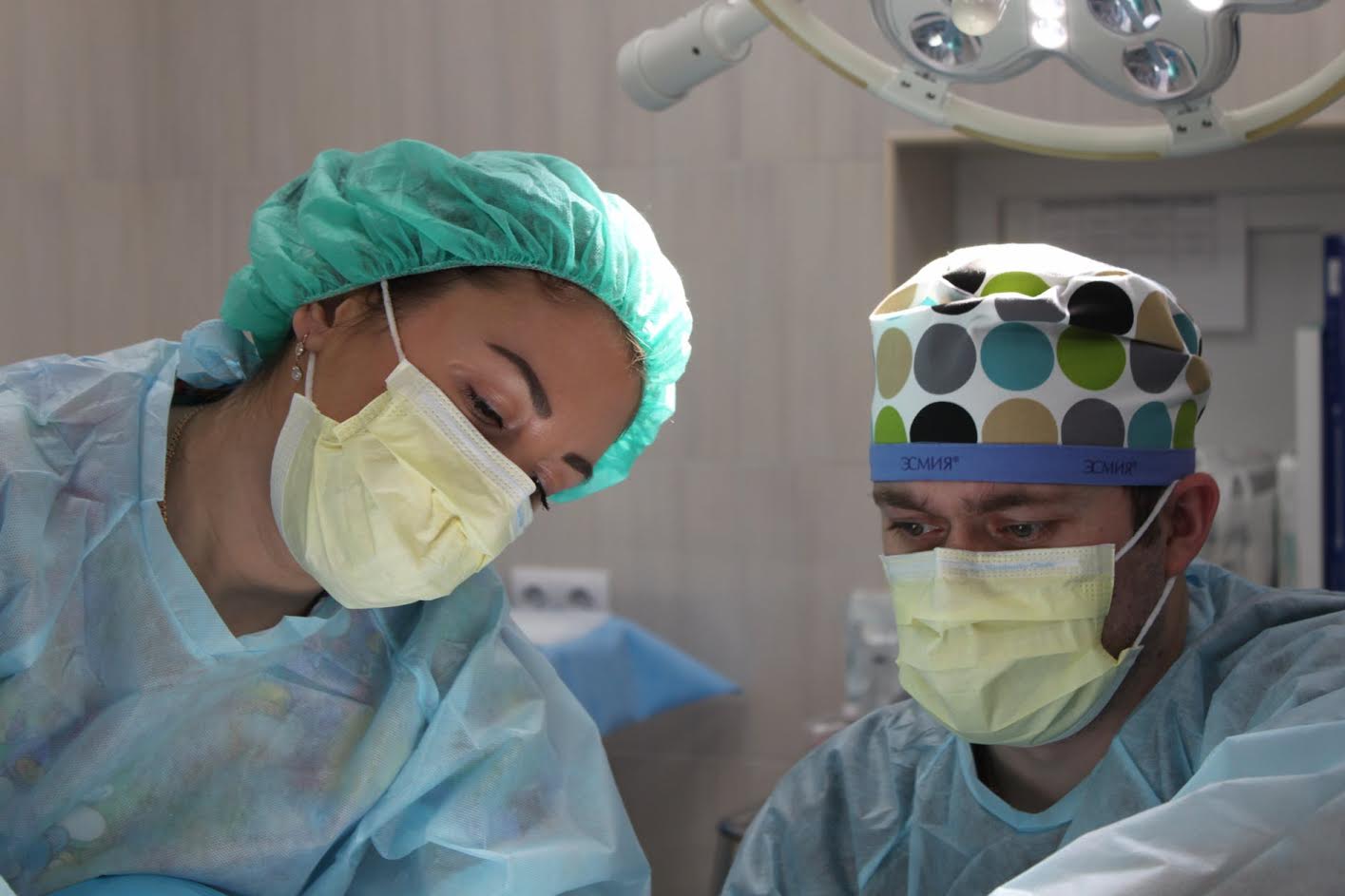
Along with this fantastic duo the webinar host will be Daniel C. Shaw, an enthusiastic storyteller with lots of practical ideas. Ambassador for GCR - Global Clinic Rating, an award-winning initiative co-founded by a Google employee that allows patients and healthcare professionals to compare apparent quality in nearly half a million private clinics and hospitals worldwide.
The goals of the webinar are certainly to gain insight into the lasting impact of the COVID-19 pandemic on the patient experience and to set a strategy for an improved patient experience in 2021 and beyond.
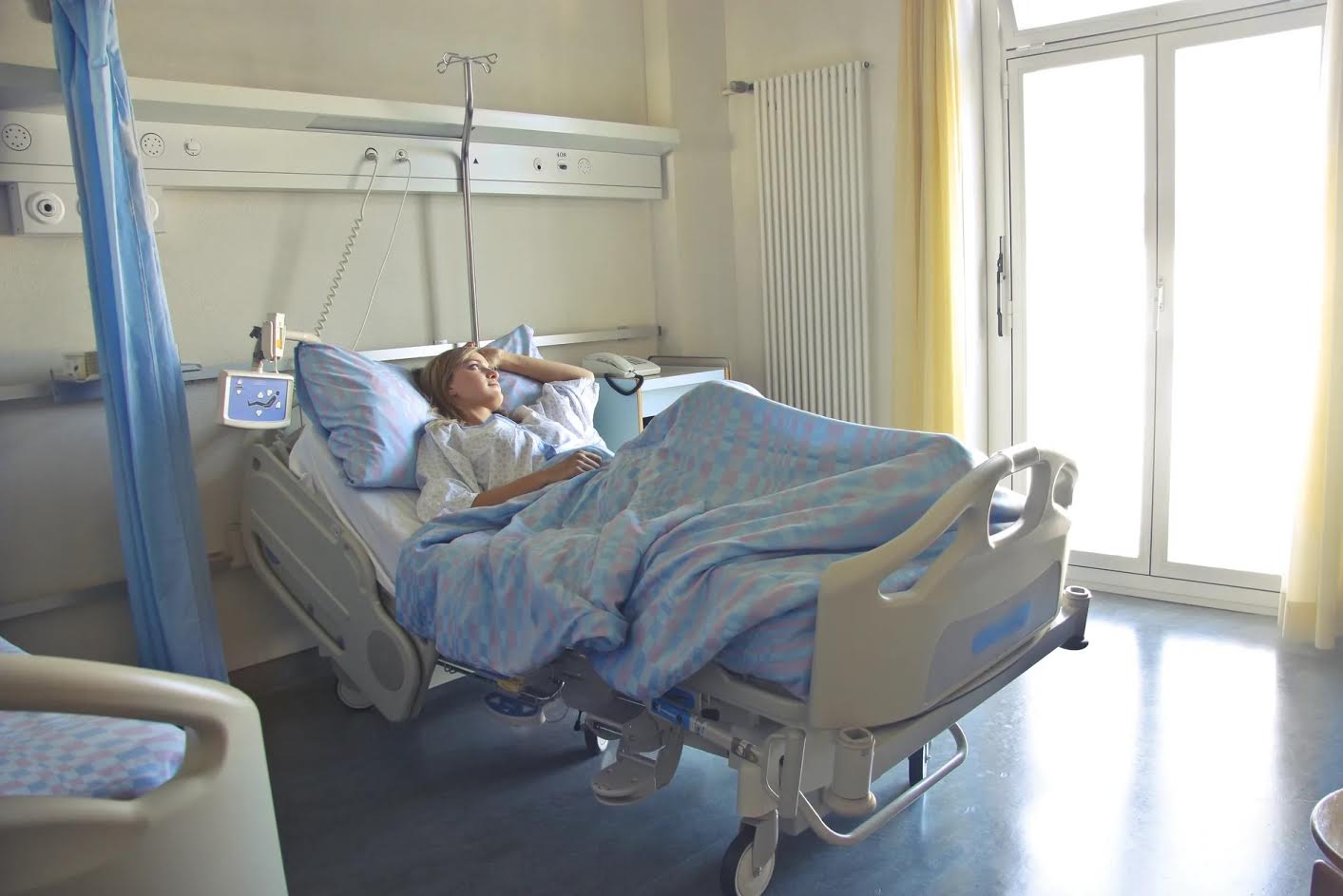
The Cleveland Clinic promises every patient that we will keep them safe, care for them as a person, partner with them, and make the care journey easier. These promises guide our process and policy and keep our patients at the center of everything that we do. The outbreak of COVID-19 forced many abrupt changes to the practice of medicine at Cleveland Clinic – from cessation of elective procedures, to changes in visitation, to development of surge capacity. The Office of Patient Experience supported the teams making these rapid changes by leveraging a combination of empathy, standardized communication, and technology to bridge the gaps made by COVID-19. In this presentation, I’ll discuss how we kept our promises and forged new paths to an even better experience.
Join this great webinar and sign up via the link.
For more on the Croatian medical tourism industry, follow the dedicated TCN link.
Flights to Croatia: British Airways Returns to Zagreb at End of October
October 10, 2020 - The latest news for flights to Croatia as British Airways returns to Zagreb at the end of October.
Croatian Aviation reports that British Airways has announced that from the end of October, it will operate again on some of its currently suspended routes, including the London - Zagreb route!
On September 6 this year, British Airways temporarily canceled the London Heathrow - Zagreb route, leaving the possibility of re-operation on this route from the beginning of the winter flight schedule.
According to the latest information from the headquarters of British Airways, that will happen soon. Namely, British Airways will operate on this route again from Sunday, October 25, 2020.
From that date, British Airways will operate between London and Zagreb four times a week, every Tuesday, Friday, Saturday, and Sunday.
Unlike the previous flight schedule, when British Airways almost always operated on this route in the morning, now all flights, except Fridays, will operate in the afternoon.
On the route to Zagreb, British Airways will use A320 aircraft, which has a capacity of up to 180 seats in the fleet of this carrier. Flights are on sale on British Airway's official website, and return tickets can be purchased for just over 600 kuna.
It is extremely important that this world-famous company returns to Zagreb Airport, although the global pandemic and travel restrictions do not currently guarantee excessive success in terms of passenger demand and yield.
British Airways cut off traffic to all Croatian airports in September, except Dubrovnik. The London - Dubrovnik line operates regularly all the time, and according to the company's current announcements, it should also operate in the first days of November.
For the latest travel info, bookmark our main travel info article, which is updated daily.
Read the Croatian Travel Update in your language - now available in 24 languages.
Croatian Premium Wine Imports and Vinum.IN Magazine Launch "Game of Wines 2020"
October 10, 2020 - Croatian Premium Wine Imports, Inc. (CPWI) and Vinum.IN magazine have launched a joint campaign called "Game of Wines 2020", which aims to help Croatian winemakers by exporting wine to the United States.
Croatian Premium Wine Imports, Inc. (CPWI), is an importer, promoter and online store for delivery in the US, Based in Boston, Mass. CPWI imports, distributes, and promotes boutique Croatian wines in the US. The company expanded its wine portfolio from the Komarna region, Dubrovnik county, to the larger Dalmatia, Istria and Uplands. Together with Croatian wine magazine, Vinum.IN, CPWI has jointly launched across the ocean, under the title "Game of Wines 2020".
It aims to help Croatian winemakers, primarily by expanding knowledge about the quality boutique wines in the United States and ultimately increasing wine exports. Project partner Mirena Bagur, Mag. Oecc., VP/Brand Management at CPWI, a Croatian born USA citizen with a Boston address, founded a company for the import of Croatian wines to the USA one year ago, all the while actively working on spreading knowledge about Croatian wines in America.
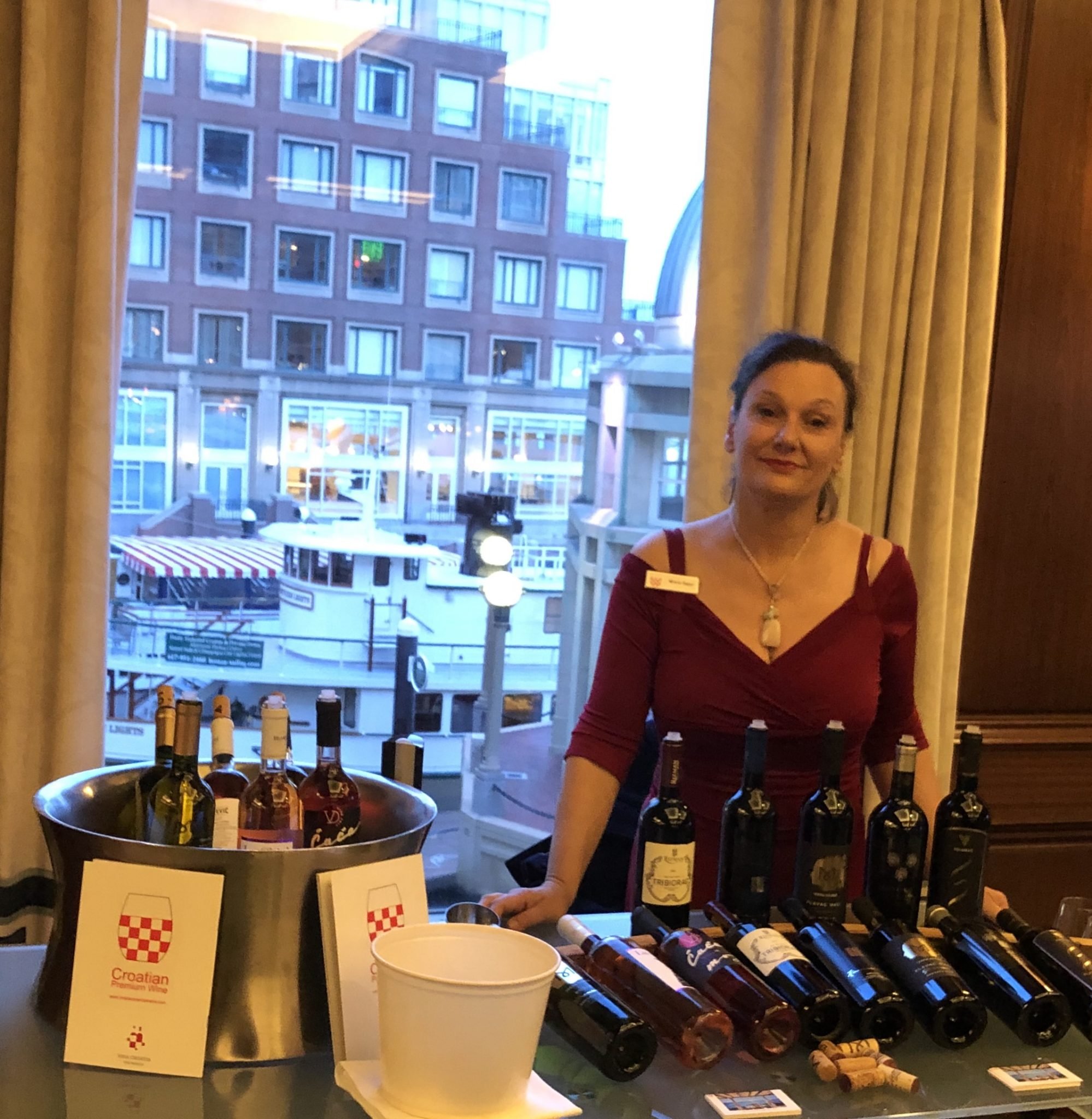
"Collaboration with VinumIn means a lot because we want to actively connect Croatians in the homeland - with their families or friends in America, so that together they can not only enjoy the taste of Croatia through quality Croatian wines, but can directly help spread information and knowledge about the current state of Croatian winemaking," says Mirena Bagur.
Americans, as well as the Croatian diaspora, are now given the opportunity to get closer to Croatia through wines. It is especially important in a year when they could not travel, and at the same time they can directly influence the increase in demand for Croatian wines, adds Bagur, whose company actively cooperates with other importers of Croatian wines in the USA and Canada.
The Game of Wines 2020 is open for participation to all over the age of 18 in Croatia, or 21 in the USA - and more detailed information and instructions on how to participate can be found at the link: https://www.vinumin.eu/post/game-of-wines- 2020.
Based in Zagreb, Croatia, Vinum.IN is the only wine industry magazine in Croatia. Published quarterly and distributed via wineries, tourist centers and newsstands, its goal is to present the Croatian wine scene and educate primarily about Croatian wines, inform about the events on the wine and gastro scene, and share recipes and tips on how to best pair wine and food. For more information, visit www.vinumin.eu or contact This email address is being protected from spambots. You need JavaScript enabled to view it..
Dijana Grgić, owner of Vinum.IN, and a partner in this collaboration says:
"As the owner and editor of the only wine magazine in Croatia, I am extremely sensitive to the issue of winemakers, especially in these challenging times. That is why I strongly support every attempt to help them sell wine, especially abroad. CPWI already has almost 50 different wine labels in its portfolio: from three distinct Croatian wine regions, and has so far built two distribution channels, an online store that delivers to almost all US states, www.CroatianPremiumWine.com, and a traditional distribution that has so far established in Massachusetts, New Hampshire, Georgia and California. The company continues to work on creating distribution in other states as well."

For more information, inquiries or to place an online order, visit www.croatianpremiumwine.com/shop-online, contact This email address is being protected from spambots. You need JavaScript enabled to view it., and follow us at Linkedin, Twitter, Facebook and Instagram.
340 Offers Presented in Vacation-Worthy Week Campaign Encouraging Domestic Tourism
October 10, 2020 - The Ministry of Tourism and Sport presented the Vacation-Worthy Week campaign earlier this week. From October 16 to 25, domestic and foreign guests are offered various tourist services and experiences at 50 percent off.
HRTurizam reports that the Vacation-Worthy Week online portal contains about 340 valid offers (of which 159 offers are for accommodation) and services at 50 percent off from different parts of Croatia, from the coast to the continent, and an additional 70 applications are being processed.
"This is a long-term project that will be organized twice a year, during the Easter holidays and October. We are glad that the project has aroused the great interest of tourism service providers who are our main partners, and without whose cooperation, this action would not be possible. Through the project, we want to positively influence the increase of tourist traffic before and after the season and the further development of domestic tourism. Through this action, tourists will have the opportunity to visit different parts of Croatia at 50% off for many tourist products and services, from accommodation, transportation, cultural, historical, natural sights and attractions to catering services and various experiences," said director Stanicic, inviting all travel lovers to take advantage of the week of favorable prices, but also all tourist entities to get involved in the action with their offers.
The Minister of Tourism and Sports Nikolina Brnjac also commented on the campaign and said: "I am pleased with the large number of tourist entities and service providers who joined the Vacation-Worthy Week action. We are launching this action because we want to offer domestic tourists the adventure of discovering the riches of autumn in Croatia, and at half the price. Meet, explore, and enjoy Croatia in the off-season and, at the same time, create a story of year-round tourism development with us."
Among the registered entities whose offers are on the portal are, for example, national parks and nature parks such as Plitvice Lakes, Krka, Paklenica, Risnjak, Kopački rit, Papuk, Lastovo archipelago, Žumberak-Samoborsko gorje and Vrana lake, hotels such as Valamar Riviera, Arena Hospitality Group, Marina Punat hotel & resort, Hilton hotels Zagreb, Coronaro hotel, Hotel Petrčane, Importanne resort Dubrovnik, Thalassotherapy Crikvenica, Grand Hotel Lav Split, and others. Travel agencies such as Adriagate, VAL, Terra Travel, Obzor putovanja, etc., also offered their package deals. All lovers of culture, art, but also tourist attractions at significantly reduced prices will be able to enjoy museums such as the Natural History Museum of Rijeka, Croatian Maritime Museum Split, Betina Museum of Wooden Shipbuilding, Museum of Trilj, Archaeological Museum of Narona, but also other facilities such as are Aquatika - Freshwater Aquarium Karlovac, Glavani Park, Solana Nin, Segway city tour Zagreb, Quad Gorski Kotar, and more.
For the latest travel info, bookmark our main travel info article, which is updated daily.
Read the Croatian Travel Update in your language - now available in 24 languages.
Masks Mandatory in Croatian Gyms from Monday? A Look at Potential New Measures
October 10, 2020 - Are masks mandatory in Croatian gyms from next week? A closer look at the potential new measures as coronavirus cases spike in the country.
Slobodna Dalmacija reports that the large increase in new coronavirus cases in Croatia prompted the Headquarters to hold an emergency meeting, and new measures, as they announced, should start early next week. As announced by Krunoslav Capak, it is increasingly likely that we will be obliged to wear masks in all indoor spaces from Monday.
This also applies to gyms, which would not be too surprising for someone who lives in Latin America or other parts of the world, because wearing masks in gyms has been in force elsewhere for some time.
"Masks indoors are being considered because the spread of the infection has been noticed in many workplaces among colleagues who are in close contact, for example, sharing the same office, and are unable to adhere to physical distance measures," Health Minister Vili Beros told Index.hr.
Miroslav Venus, president of the Croatian Epidemiological Society, points out that lockdown is the worst option.
"Therefore, it is better to wear masks in gyms, because at this moment we have to do everything we can to prevent the closures again," Venus said.
Coach Vladimir Pavlinovic also commented, who agrees with Venus.
"Everything is better than closing fitness centers again, because who knows how long all this will last. Users will get used to it over time. Although masks as a prop will certainly bother and interfere with their breathing, they may also feel nauseous, so they will need to pay attention to the signals sent by their body," Pavlinovic believes.
Wearing a mask when exercising, whether indoors or outdoors, can certainly be demotivating because it is harder to get air during exercise. Still, it also has many advantages, especially when we know that it is impossible to maintain the prescribed social distance of one meter in gyms.
While it may take a few weeks of regular exercise to get used to it, in the end, you will feel more comfortable exercising with a mask, experts say, noting that it is imperative to listen to your own body’s pulse.
If you start feeling dizzy or tired, it is advisable to take a break and remove the mask and, at that point, stop other exercisers. Also, certain medical conditions can make exercising in a mask potentially dangerous, for example, for people with respiratory conditions such as asthma or chronic lung disease, heart disease, or angina.
In these situations, if your doctor has advised you not to wear a mask during exercise, it is advisable to exercise at home or in an outdoor environment where there is enough ventilation and space to maintain an appropriate social distance. After all, the question arises, is it safe to exercise with a face mask?
"In general, most people certainly exercise while wearing a face mask," says Grayson Wickham, a physical therapist. "You will need to monitor how you feel during exercise and watch for specific symptoms such as dizziness, numbness, tingling, or shortness of breath," warns Wickham.
Over the course of a few weeks, your body will certainly adjust by becoming more efficient at oxygen metabolism, but this will take time.
For the latest travel info, bookmark our main travel info article, which is updated daily.
Read the Croatian Travel Update in your language - now available in 24 languages.
Join the Total Croatia Travel INFO Viber community.


